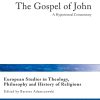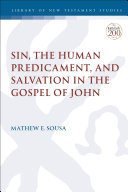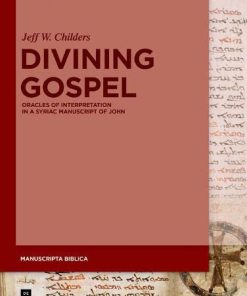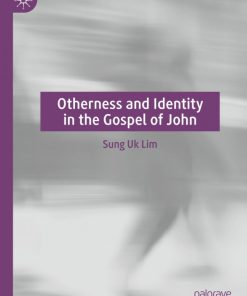Paroimia and Parresia in the Gospel of John A Historical Hermeneutical Study 1st Edition by Thomas Tops ISBN 3161611020 978-3161611025
$50.00 Original price was: $50.00.$25.00Current price is: $25.00.
Paroimia and Parresia in the Gospel of John A Historical Hermeneutical Study 1st Edition by Thomas Tops – Ebook PDF Instant Download/Delivery: 3161611020, 978-3161611025
Full dowload Paroimia and Parresia in the Gospel of John A Historical Hermeneutical Study 1st Edition after payment
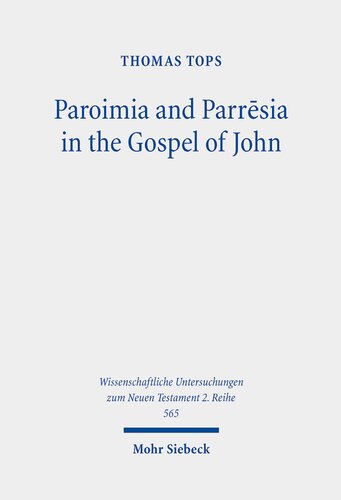
Product details:
ISBN 10: 3161611020
ISBN 13: 978-3161611025
Author: Thomas Tops
Paroimia and Parresia in the Gospel of John A Historical Hermeneutical Study 1st Table of contents:
Chapter 1 Transforming Historical Objectivism into Historical
Hermeneutics: From “Historical Illness” to Properly Lived
Historicality ………………………………………………………………………………….. 7
1. The Tension between Theology and Modern-Historical
Methodologies …………………………………………………………………………… 8
2. From Historical Objectivism to Historical Hermeneutics ……………….. 11
3. The Reception-Historical Methodology ……………………………………….. 14
3.1 Historical Criticism as a Prelude for the Study of Reception
History …………………………………………………………………………………. 14
3.2 Historical Criticism as Identical to the Study of Reception
History …………………………………………………………………………………. 17
3.3 Historical Criticism as an Integrated Discipline of the Study of
Reception History ………………………………………………………………….. 20
4. From “Historical Illness” to Properly Lived Historicality ……………… 22
5. From Historical Consciousness to wirkungsgeschichtliches
Bewusstsein ……………………………………………………………………………. 30
6. Hermeneutical Consciousness and the Fragehorizont of the Text …….. 33
7. The Alterity of the Text ……………………………………………………………… 35
8. The (In)Validity of Textual Interpretation …………………………………….. 41
9. Intermediate Conclusion …………………………………………………………… 49
Chapter 2 An Evaluative Status Quaestionis on ëúøóöŤë and
ëúúòûŤë in the Gospel of John ………………………………………………. 53
1. Johannine ëúøóöŤë in Early Scholarly Literature ……………………….. 54
1.1 The Terms ëúøóöŤë and ëúëìøõĤas Synonyms in the
LXX …………………………………………………………………………………….. 54
1.2 Johannine ëúøóöŤë as Inauthentic …………………………………………. 59
1.3 Johannine ëúøóöŤë and Synoptic ëúëìøõĤ as Equivalent
Translations of an Aramaic Vorlage ………………………………………… 60
1.4 Johannine ëúøóöŤë as the Means of Communication of the
Johannine Group ……………………………………………………………………. 62
2. The Genre-Critical Approach: Johannine ëúøóöŤë as Terminus
Technicus for a Literary Genre ………………………………………………….. 64
2.1 The Literary Genre of Johannine ëúøóöŤë ……………………………… 65
2.2 Related Studies ……………………………………………………………………… 67
2.3 Intermediary Studies ………………………………………………………………. 69
2.4 Critical Reactions ………………………………………………………………….. 70
3. The Hermeneutical Approach: Johannine ëúøóöŤë and
ëúúòûŤë as Modi Dicendi and Modi Intelligendi ……………………….. 73
3.1 Johannine ëúøóöŤë and ëúúòûŤë as Key Terms of
Christological Epistemology …………………………………………………… 73
3.2 Johannine ëúøóöŤë and ëúúòûŤë as Key Terms of John’s
Philosophical Understanding of Language ……………………………….. 77
3.3 Dialectics between Johannine ëúøóöŤë and ëúúòûŤë as
Relecture ………………………………………………………………………………. 78
4. The Post-Hermeneutical Approach: Johannine ëúøóöŤë and the
Philosophical Idea of Inexpressibility …………………………………………. 80
4.1 Studies Inspired by Derrida …………………………………………………….. 80
4.2 Related Studies ……………………………………………………………………… 83
5. The Reader-Response Approach: Johannine ëúøóöŤë as a
Literary Strategy ……………………………………………………………………… 85
Table of Contents IX
5.1 Johannine ëúøóöŤë and the Cosmological Tale (A.
Reinhartz) …………………………………………………………………………….. 86
5.2 Johannine ëúøóöŤë and Participation/Transformation (G.R.
O’Day and R. Kysar) ……………………………………………………………… 88
5.3 Johannine ëúøóöŤë and Mark 4:1–20 (C.W. Skinner) ……………… 90
6. Studies on the Semantics of Johannine ëúúòûŤë …………………………. 92
6.1 Johannine ëúúòûŤë as Specifically Christian …………………………. 93
6.2 An Initial Attempt to Historical Contextualisation of Johannine
ëúúòûŤë (G.L. Parsenios)…………………………………………………… 100
7. Intermediate Conclusion …………………………………………………………. 106
Chapter 3 ÞëúøóöŤë and ëúúòûŤë in the Literary Context of
the Gospel of John ……………………………………………………………………. 109
1. John 10…………………………………………………………………………………. 109
2. John 11:11–16 ……………………………………………………………………….. 123
3. John 16:23–33 ……………………………………………………………………….. 127
3.1 Relecture and réécriture ……………………………………………………….. 129
3.2 The Aporia of John 16:5 ……………………………………………………….. 132
3.3 The Fusion of Pre-Paschal and Post-Paschal Time in John
16:23–33 …………………………………………………………………………….. 136
4. Intermediate Conclusion …………………………………………………………. 144
Chapter 4 The Orientation of the Teaching of the Post-Paschal
Paraclete in the Gospel of John ……………………………………………….. 145
1. John 14:25–26 ……………………………………………………………………….. 146
1.1 John 14:26e: Antecedent(s) of Relative Pronoun? …………………… 148
1.2 John 14:26d: Explicative or Cumulative ôëŤ? …………………………. 151
2. John 16:12–13 ……………………………………………………………………….. 153
2.1 John 16:13c, e: ÔūÏüĥ÷ċõĤùïóë÷Ćûë÷ + ċôøŴûïóorĠ÷üIJ
ċõòùïŤďĄûį + ċôøŴïó? …………………………………………………….. 156
2.2 John 16:13c: The Meaning of Ąûį/Ćûë÷ ……………………………. 159
2.3 John 16:12a: The Meaning of øõõĄ …………………………………….. 159
2.4 John 16:13f: The Meaning of üąĠúíĻöï÷ëċ÷ëññïõïŦ …………… 161
3. Repetition as a Key Notion for Understanding the Teaching
Function of the Paraclete ………………………………………………………… 162
3.1 Kierkegaard’s Distinction between Recollection and Repetition .. 163
3.2 The Paraclete’s Reminding and Teaching as Recollection and
Repetition ……………………………………………………………………………. 166
4. Intermediate Conclusion …………………………………………………………. 168
Chapter 5 The Semantics of ëúøóöŤë and ëúúòûŤë in
Connection to ĠúþüĄþ and ëūüěþ in John 16:23–27 …………….. 171
1. ɩúþüĄþ and ëūüěþ in the Fourth Gospel …………………………………. 172
1.1 Pre-Paschal ĠúþüĄþ versus Post-Paschal ëūüěþ …………………….. 172
1.2 Polemical ĠúþüĄþ versus Confident ëūüěþ ……………………………. 176
2. Ðūüěþ and ëúúòûŤë in John 16:23–27 ……………………………………. 179
2.1 A Philological Analysis of ĠúþüĄþ and ëūüěþ in John 16:23–
27……………………………………………………………………………………….. 180
2.2 The Disciples and Jesus’ ëúúòûŤë at the Hour (John 16:25) ….. 181
3. In Jesus’ Name ………………………………………………………………………. 187
3.1 Evaluative Status Quaestionis ……………………………………………….. 187
3.2 John 16:26 …………………………………………………………………………… 188
3.3 Being Sent by Jesus ……………………………………………………………… 191
4. Intermediate Conclusion …………………………………………………………. 193
Chapter 6 The ëúúòûŤë of the Johannine Jesus as an
Experimental Teaching Method ………………………………………………. 197
1. Philodemus: ëúúòûŤë as an Experimental Method ……………………. 198
2. ÞëúúòûŤë as an Experimental Method Beyond Epicureanism ………. 201
2.1 Plutarch …………………………………………………………………………… 202
2.2 Clement of Alexandria ………………………………………………………. 203
3. The Gospel of John …………………………………………………………………. 205
3.1 John 7:1–44 …………………………………………………………………………. 205
3.2 John 10:1–30 ……………………………………………………………………….. 208
4. Intermediate Conclusion and Reflection on the Fourth Gospel as
an Act of ëúúòûŤë ……………………………………………………………….. 209
Chapter 7 The Adaptability of the ëúúòûŤë of Jesus in the
Fourth Gospel …………………………………………………………………………… 211
1. Philodemus: The Two Forms of ëúúòûŤë ………………………………… 211
2. The Two Forms of ëúúòûŤë beyond Epicureanism ……………………. 214
2.1 Philo …………………………………………………………………………………… 214
2.2 The Cynic Epistles ……………………………………………………………….. 216
2.3 Plutarch ………………………………………………………………………………. 218
2.3.1 Therapeutic ëúúòûŤë …………………………………………………… 218
2.3.2 Practical ëúúòûŤë ……………………………………………………….. 221
2.4 Dio Chrysostom …………………………………………………………………… 224
2.5 Clement of Alexandria …………………………………………………………. 225
3. The Gospel of John …………………………………………………………………. 228
3.1 The Mixed Form of ëúúòûŤë in the Farewell Discourse ………… 229
3.1.1 John 13:36–14:10 ………………………………………………………….. 229
3.1.2 John 14:11–24 ………………………………………………………………. 231
3.1.3 John 14:25–28 ………………………………………………………………. 231
3.1.4 John 16:25–32 ………………………………………………………………. 232
3.2 The Mixed Form of ëúúòûŤë outside the Farewell Discourse … 233
3.2.1 John 1:46–51 ………………………………………………………………… 234
3.2.2 John 3:9–10 ………………………………………………………………….. 235
3.2.3 John 20:24–29 ………………………………………………………………. 236
3.3 The Simple Form of ëúúòûŤë …………………………………………….. 237
3.3.1 John 5:37–38 ………………………………………………………………… 237
3.3.2 John 5:41–42 ………………………………………………………………… 238
3.3.3 John 6:26–27, 36 …………………………………………………………… 239
3.3.4 John 7:14–31 ………………………………………………………………… 241
3.4 The Gradual Intensification of ëúúòûŤë ………………………………. 243
3.4.1 John 8:12–20 ………………………………………………………………… 243
3.4.2 John 8:21–30 ………………………………………………………………… 244
3.4.3 John 8:31–37 ………………………………………………………………… 244
3.4.4 John 8:38–47 ………………………………………………………………… 245
3.5 John 19:19–22 ……………………………………………………………………… 248
4. Intermediate Conclusion and Reflection on the Fourth Gospel as
an Act of ëúúòûŤë ……………………………………………………………….. 249
Chapter 8 Jesus’ ëúúòûŤë and the Salvation of the ôĻûöøÏ in
the Fourth Gospel……………………………………………………………………… 253
1. The Paraclete’s Ġõěñíïó÷ in John 16:9–11 …………………………………. 253
2. ÞëúúòûŤë, Shame, and Repentance ………………………………………….. 254
2.1 LXX Proverbs ……………………………………………………………………… 255
2.2 Philodemus………………………………………………………………………….. 260
2.3 Philo …………………………………………………………………………………… 260
2.4 Plutarch ………………………………………………………………………………. 262
2.5 Clement of Alexandria …………………………………………………………. 264
2.6 John ……………………………………………………………………………………. 264
3. The Salvation of the ôĻûöøÏ in the Fourth Gospel ………………………. 266
3.1 John 8:28; 19:37 ………………………………………………………………….. 266
3.2 John 12:32 …………………………………………………………………………… 267
3.3 John 12:39–40 ……………………………………………………………………… 268
3.4 John 3:16–17; 12:46–47 et al. ……………………………………………….. 270
4. Intermediate Conclusion and Reflection on the Fourth Gospel as
an Act of ëúúòûŤë ……………………………………………………………….. 271
Chapter 9 Friendship and ëúúòûŤë in the Fourth Gospel ….. 275
1. Friendship Language in the Fourth Gospel ………………………………… 275
1.1 ÕŤõøÏ …………………………………………………………………………………. 275
1.2 Õóõěþ, ċñëĄþ ………………………………………………………………….. 279
1.2.1 Father – Son………………………………………………………………….. 279
1.2.2 Jesus – Disciples …………………………………………………………… 279
2. The Greco-Roman Ideal of Friendship ………………………………………. 280
3. Friendship, ëúúòûŤë, and Commitment …………………………………… 283
3.1 LXX Wisdom Tradition ……………………………………………………….. 283
3.2 Philo …………………………………………………………………………………… 284
3.3 John ……………………………………………………………………………………. 285
4. Jesus’ Death as Act of Friendship …………………………………………….. 287
4.1 Scholarly Literature ……………………………………………………………… 287
4.2 Friendship and ëúúòûŤë …………………………………………………….. 289
4.2.1 Philodemus …………………………………………………………………… 290
4.2.2 Plutarch ………………………………………………………………………… 291
4.3 John ……………………………………………………………………………………. 294
5. Intermediate Conclusion …………………………………………………………. 296
Chapter 10 Jesus’ ëúúòûŤë in the Fourth Gospel: Public
and/or Private? ………………………………………………………………………….. 297
1. The Scholarly Distinction of Public/Political and Private/Ethical
ëúúòûŤë …………………………………………………………………………….. 297
2. Public and Private ëúúòûŤë from the First Century BCE to the
Second Century CE ………………………………………………………………… 299
2.1 Philodemus………………………………………………………………………….. 299
2.2 Plutarch ………………………………………………………………………………. 300
2.3 Lucian of Samosata ……………………………………………………………… 303
3. Public and Private ëúúòûŤë in the Gospel of John ……………………. 305
4. Intermediate Conclusion and Reflection on the Fourth Gospel as
an Act of ëúúòûŤë ……………………………………………………………….. 309
Chapter 11 ÞëúøóöŤë and ëúúòûŤë in LXX Proverbs, the
Ancient Rhetorical Theory of Figured speech, Plutarch, and the
Gospel of John ………………………………………………………………………….. 311
1. LXX Proverbs and its Early Reception ………………………………………. 311
1.1 LXX Proverbs 1:1–6 …………………………………………………………….. 312
1.2 Early Church Fathers ……………………………………………………………. 314
XIV Table of Contents
1.2.1 Clement of Alexandria …………………………………………………… 314
1.2.2 Basil of Caesarea …………………………………………………………… 316
1.2.3 Gregory of Nyssa ………………………………………………………….. 319
1.2.4 Synopsis Scripturae Sacrae (Ps.-John Chrysostom/ Ps.-
Athanasius) …………………………………………………………………………… 322
2. Rhetorical Theory of Figured Speech ………………………………………… 323
2.1 Demetrius ……………………………………………………………………………. 324
2.2 Quintilian ……………………………………………………………………………. 326
2.3 Ps.-Dionysius of Halicarnassus ……………………………………………… 330
2.4 Ps.-Hermogenes …………………………………………………………………… 332
3. Plutarch ……………………………………………………………………………….. 334
3.1 ÞëúúòûŤë and ë÷øýúñŤë …………………………………………………… 335
3.2 ÞëúúòûŤë and ëúøóöŤë …………………………………………………….. 337
4. The Gospel of John …………………………………………………………………. 341
4.1 John 7:32–36 ……………………………………………………………………….. 344
4.2 John 10:1–6 …………………………………………………………………………. 346
5. Intermediate Conclusion and Reflection on the Socio-Historical
Situation of the Fourth Gospel …………………………………………………. 348
Chapter 12 A Historical-Contextual Comparison of ëúøóöŤë
and ëúúòûŤë in John to ëúëìøõĤ and ëúúòûŤë in Mark . 351
1. Evaluative Status Quaestionis on ëúúòûŤë (Mark 8:32a) …………… 351
1.1 The Opposite Term of ëúúòûŤë? ………………………………………… 351
1.2 ÞëúúòûŤë as Univocal Language? ………………………………………… 355
2. ÞëúëìøõĤ and ëúúòûŤë in Mark and the Ancient Rhetorical
Theory of Figured Speech ……………………………………………………….. 356
2.1 Markan Parable Theory and Demetrius’ Definition of Figured
Speech ………………………………………………………………………………… 357
2.2 The Markan ëúëìøõĤ and the Motives/Uses of Figured
Speech in Ancient Rhetorical Theory …………………………………….. 361
2.2.1 The Motives/Uses of Figured Speech in Mark 4:1–34 ……….. 362
2.2.2 The Motives/Uses of Figured Speech in Mark 12:1–9 ……….. 364
2.2.3 ÞëúúòûŤë and Safety in Mark 8:31; 9:31; 10:33–34 ………… 365
3. Comparison of ëúøóöŤë and ëúúòûŤë in John to ëúëìøõĤ
and ëúúòûŤë in Mark …………………………………………………………… 367
3.1 Initial Attempts ……………………………………………………………………. 368
3.2 Historical-Contextual Approach ……………………………………………. 370
3.3 The Johannine ëúøóöŤë and the Markan ëúëìøõĤ through
the Lens of Quintilian …………………………………………………………… 372
4. Intermediate Conclusion …………………………………………………………. 376
People also search for Paroimia and Parresia in the Gospel of John A Historical Hermeneutical Study 1st:
parousia the bible and the mass
parousia in the new testament
a comparison of the gospel passion narratives
a parish priest duties included
You may also like…
Religion & Spirituality - Bible
Sin, the Human Predicament, and Salvation in the Gospel of John 1st Edition Mathew E. Sousa
Religion & Spirituality - Bible
Religion & Spirituality - Bible
Religion & Spirituality - Christianity
Religion & Spirituality - Bible
Otherness and Identity in the Gospel of John 1st Edition Sung Uk Lim
Housekeeping & Leisure - Games: Chess
Religion & Spirituality - Bible


